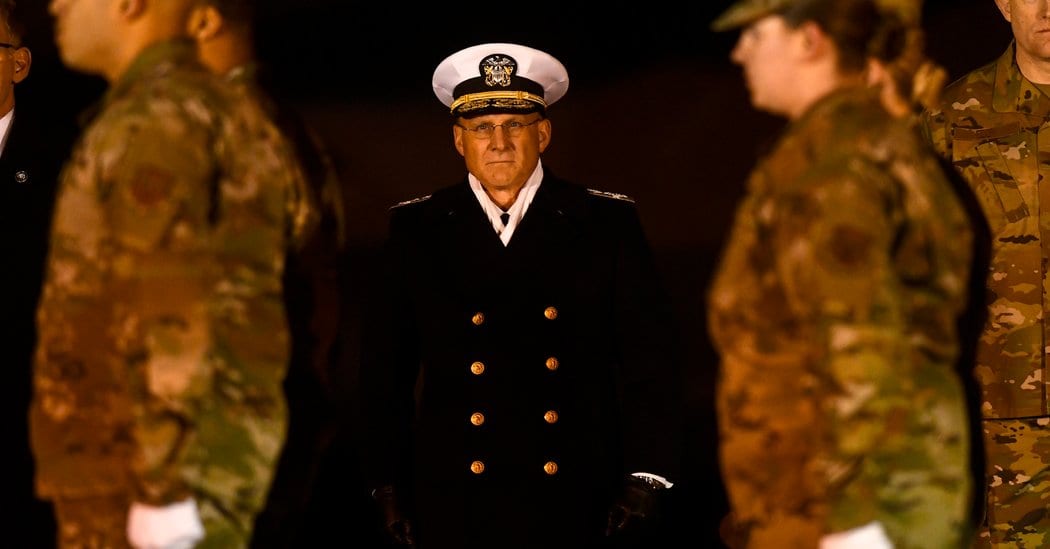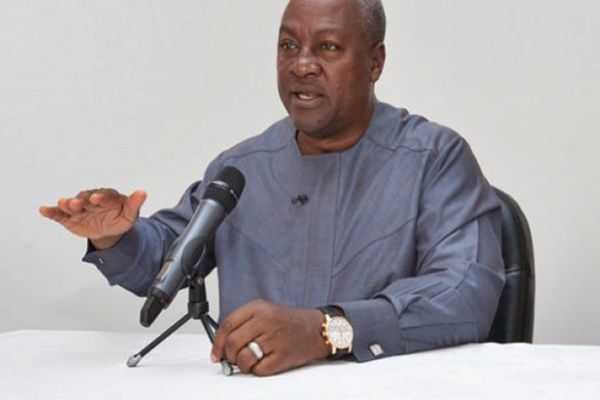[ad_1]
WASHINGTON — Adm. Michael M. Gilday landed the top job in the Navy’s uniformed ranks largely by accident.
The admiral, who took a bold step last week — recommending that the captain of a virus-stricken aircraft carrier be restored to command after he was removed by the service’s senior civilian — was plucked from the military’s Joint Staff last July to take over a scandal-plagued sea service, leapfrogging several more senior four-star officers.
He was “what we needed at the time for the Navy in my eyes,” Richard V. Spencer, the former Navy secretary who selected Admiral Gilday, said in a telephone interview. “When he says he’s going to deliver something, he delivers.”
Admiral Gilday made good on his promise to deliver recommendations after a swift investigation into the decision by Mr. Spencer’s successor to fire Capt. Brett E. Crozier, who pleaded for help fighting the coronavirus on the Theodore Roosevelt. In recommending last week that the Navy reverse the decision of senior civilians and reinstate Captain Crozier to command, Admiral Gilday put the Navy before his own career. It was a move similar to Captain Crozier’s.
Now, just as with Captain Crozier, Admiral Gilday’s fate is up in the air, current and former officials say, as the Pentagon tries to divine what, exactly, President Trump wants it to do. Defense Secretary Mark T. Esper declined to endorse Admiral Gilday’s recommendations, and a final decision was kicked down the road when James E. McPherson, the new acting Navy secretary, ordered up another investigation. The Navy said Thursday it would be completed by May 27.
No one has suggested that Admiral Gilday will lose his job, too — the president has both criticized and praised Captain Crozier regarding the Roosevelt case. On Wednesday, Mr. Trump was again sounding like an undecided voter on the issue, saying that he thought Captain Crozier was a “very good man who had a very bad day.”
“And then he wanted to be Ernest Hemingway,” Mr. Trump said in remarks at the White House with the governor of Louisiana. He said the captain “started writing these long memos, and you can’t do that when you’re the captain of a ship.” Nonetheless, Mr. Trump said, he plans to see Captain Crozier soon — but did not elaborate.
Admiral Gilday, friends and associates said, was determined that his recommendations on the case would be made based on Navy principles and not on fears of what Mr. Trump might want. He went through the preliminary review, decided that Thomas B. Modly, the acting Navy secretary at the time, should not have fired Captain Crozier, and last Friday briefed Mr. Esper. Mr. Modly has resigned.
Admiral Gilday has told colleagues and friends in private conversations that his decisions about the Roosevelt, and specifically his recommendation to reinstate Captain Crozier, not only mark the first major test of his tenure as the Navy’s top officer, but also will probably define his term as chief of naval operations.
Current and retired Navy officers who have worked with and for Admiral Gilday say he is savvy to the ways of Washington’s often brutal political and bureaucratic battles — he served as a military aide to President Bill Clinton — but has never lost touch with the rank and file.
“He knows D.C. and how D.C. works, but he’s not part of the D.C. crowd,” said Adm. Scott H. Swift, a retired commander of the Navy’s Pacific Fleet. “He has an outsider’s understanding of the challenges facing the fleet.”
Indeed, colleagues and friends say he is a sailor’s admiral — a quiet, self-effacing, no-nonsense officer who is comfortable in his own skin making what might be politically unpopular decisions.
“He is a high-speed intellect with low-drag ego, which is a very rare quality at the upper echelons of any government,” said James G. Stavridis, a retired admiral and former NATO commander. Admiral Stavridis, who commanded Admiral Gilday at NATO, said of him, “At 5-foot-6 and balding, Admiral Gilday hardly resembles the stereotypical tall, silver-haired admiral.”
As a commander of Navy destroyers as well as an aircraft carrier strike group, Admiral Gilday has deep experience in the sea service’s traditional missions. But he has also been a trailblazing leader of the service’s cyberwarfare efforts.
The son of an enlisted sailor, Admiral Gilday, 57, is a native of Lowell, Mass., and graduated from the Naval Academy in 1985. Six years later, as a young lieutenant, he faced his first test in combat conditions.
It was February 1991, when the Princeton, a guided-missile cruiser deployed during the Persian Gulf war, struck a mine. Seconds later, a second blast triggered by the first mine rocked the 10,000-ton ship.
The warship — cracked in two places — lost power and propulsion, leaving the crew in the dark and a young Lieutenant Gilday, tactical action officer, in charge of defending the ship, according to an account in The Lowell Sun, his hometown newspaper.
Shipmates said Lieutenant Gilday worked with the crew to restore the damaged warship’s communications and combat systems, and then stood watch over the Princeton and other vessels in the area for more than 24 hours as the ship was extracted from the minefield.
Admiral Gilday has shown that level of competence in all of his postings since, Defense Department officials said.
But now he is facing a task that was huge even before the events of the Roosevelt took place: running a Navy that has been racked by scandals and accidents. The Navy was barely recovering from the infamous “Fat Leonard” bribery scandal that tainted much of the service’s top leadership when, in 2017, it underwent two ship collisions, nine weeks apart, that together killed 17 sailors.
Then late last year, the service was rocked by Mr. Trump when he fired Mr. Spencer, then the Navy secretary, after Mr. Spencer publicly disagreed with the president’s intervention in an extraordinary war crimes case involving a member of the Navy SEALs, Chief Petty Officer Edward Gallagher.
Chief Gallagher was accused of murdering a wounded captive with a hunting knife during a deployment to Iraq in 2017, and when the Navy prosecuted him, Mr. Trump intervened several times in his favor. When the chief’s court-martial ended in acquittal on most charges, Mr. Trump congratulated him and criticized the prosecutors. After the Navy demoted Chief Gallagher for the one relatively minor charge on which he was convicted, Mr. Trump reversed the demotion.
The commander of Naval Special Warfare, Rear Adm. Collin P. Green, then started the formal process of taking away Chief Gallagher’s Trident pin, the symbol of the Navy commandos, and expelling him from the SEALs. But Mr. Trump overruled the move — and Mr. Esper fired Mr. Spencer, who had supported the process.
Now the ghost of the Gallagher case hangs over the Roosevelt imbroglio, leaving Defense Department officials skittish of making what would be routine personnel decisions for fear that the president might overturn them via Twitter, as he did during the Gallagher case.
For Admiral Gilday, the road ahead is likely to be filled with potential pitfalls, officials said.
“The Navy has been through Fat Leonard, the collisions, Chief Gallagher and now this,” said Adm. Mike Mullen, who retired after serving as the chairman of the Joint Chiefs of Staff under Presidents George W. Bush and Barack Obama, and who worked closely with Admiral Gilday four times during their careers.
“And that’s a really difficult leadership challenge,” Admiral Mullen said, adding, “I think Mike Gilday is the right guy to lead in all of this.”


















